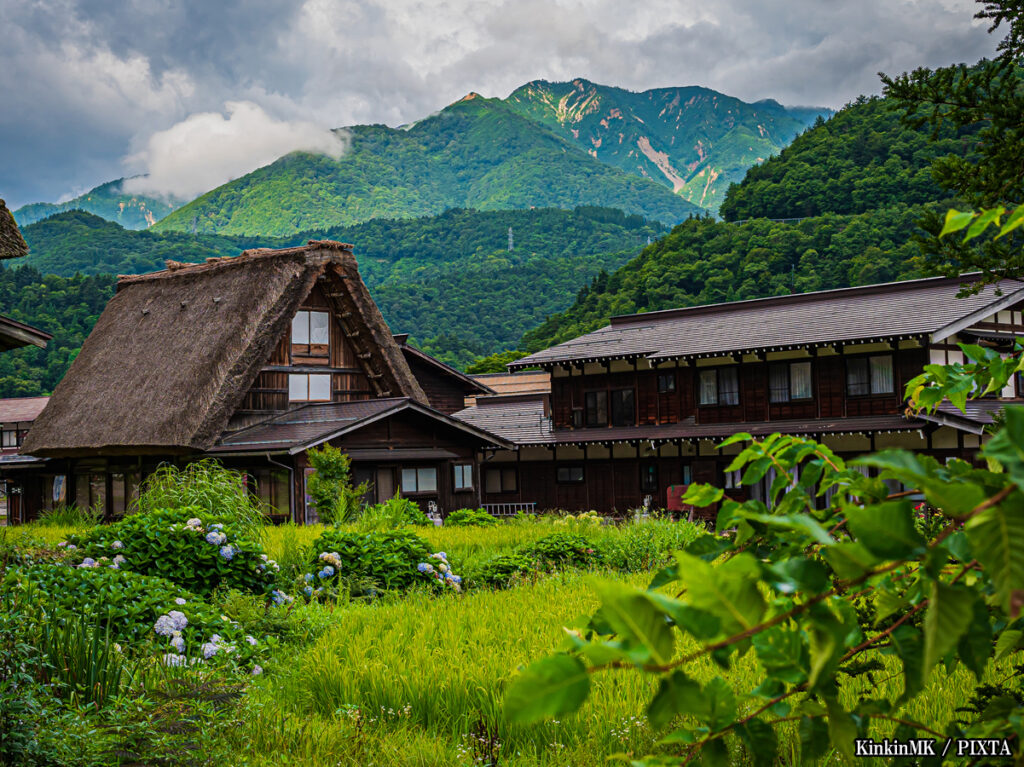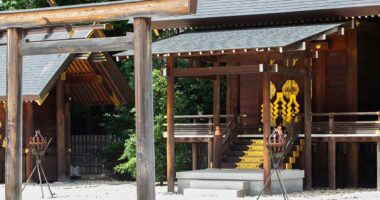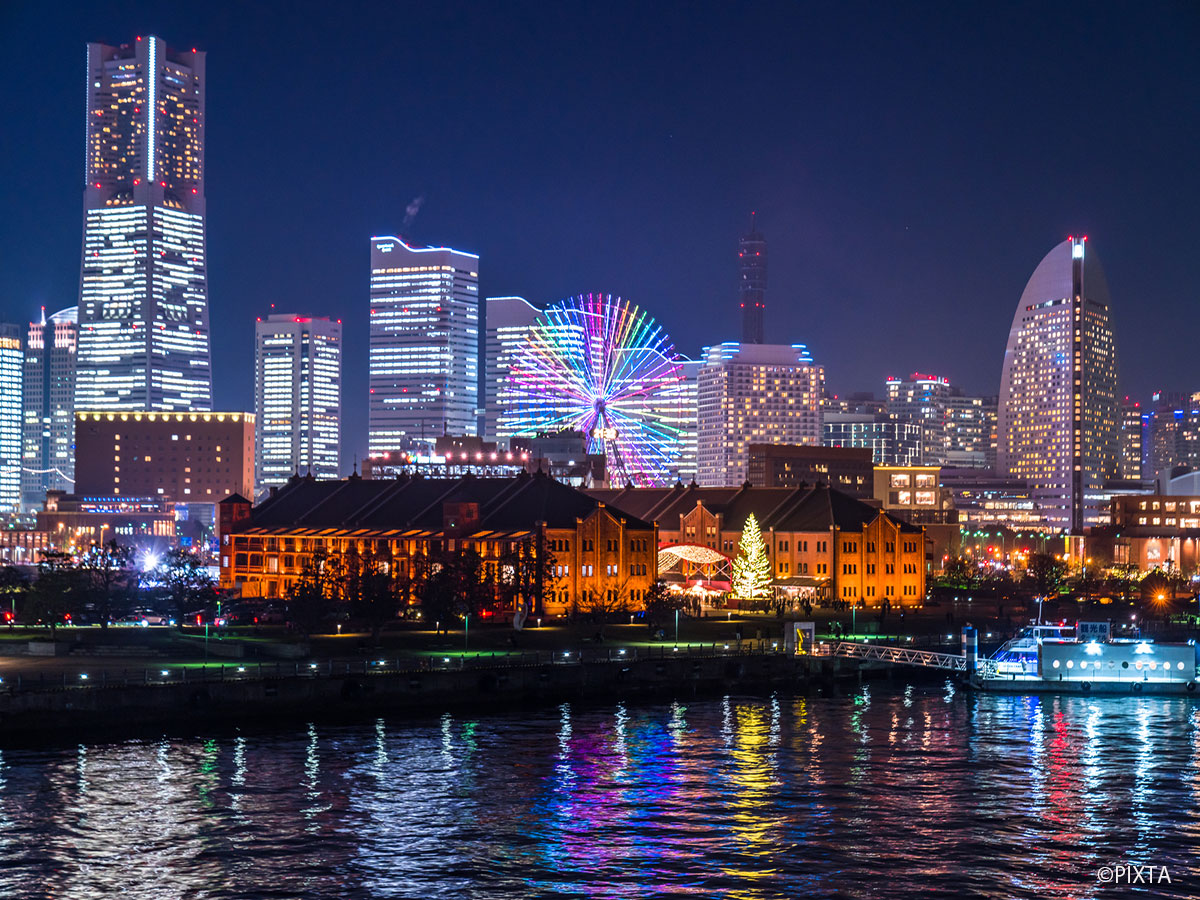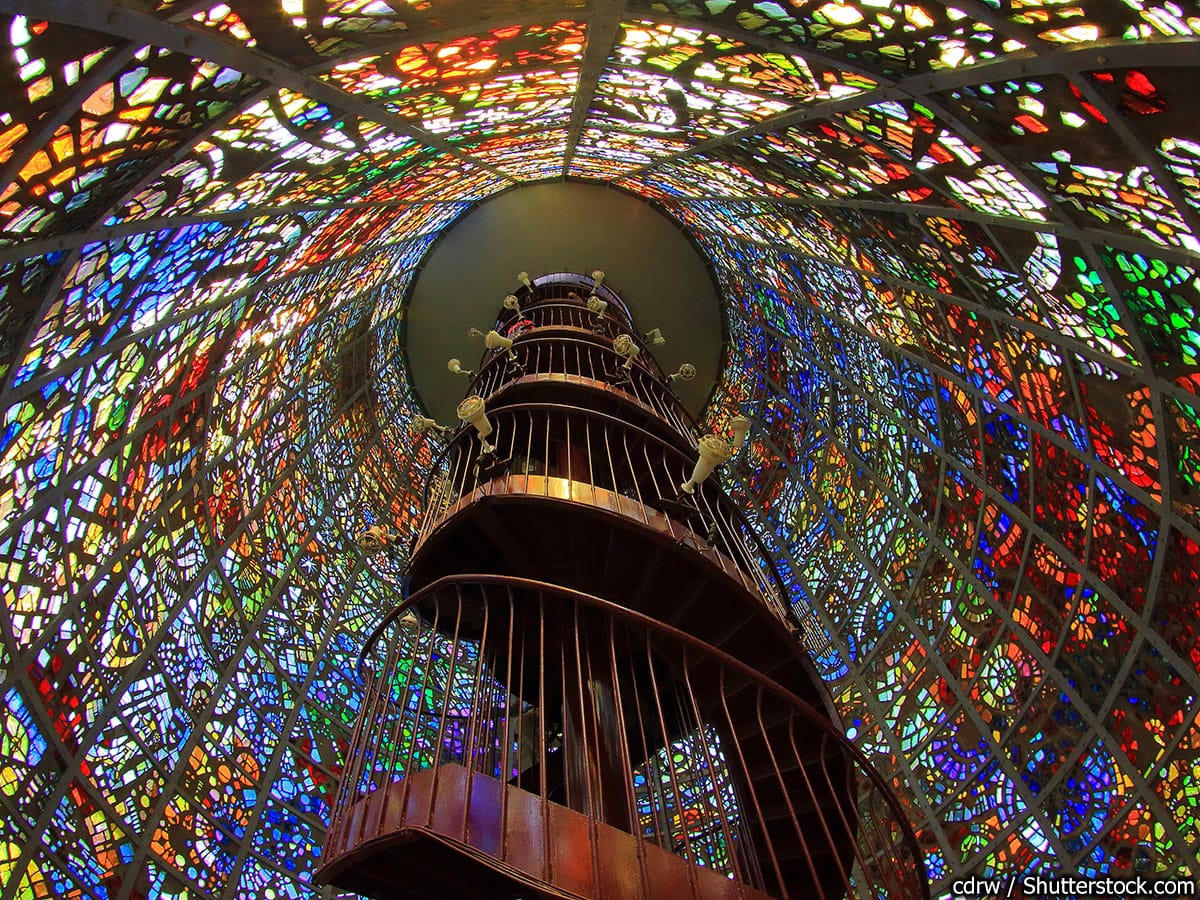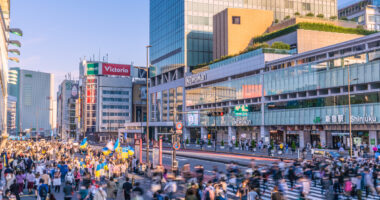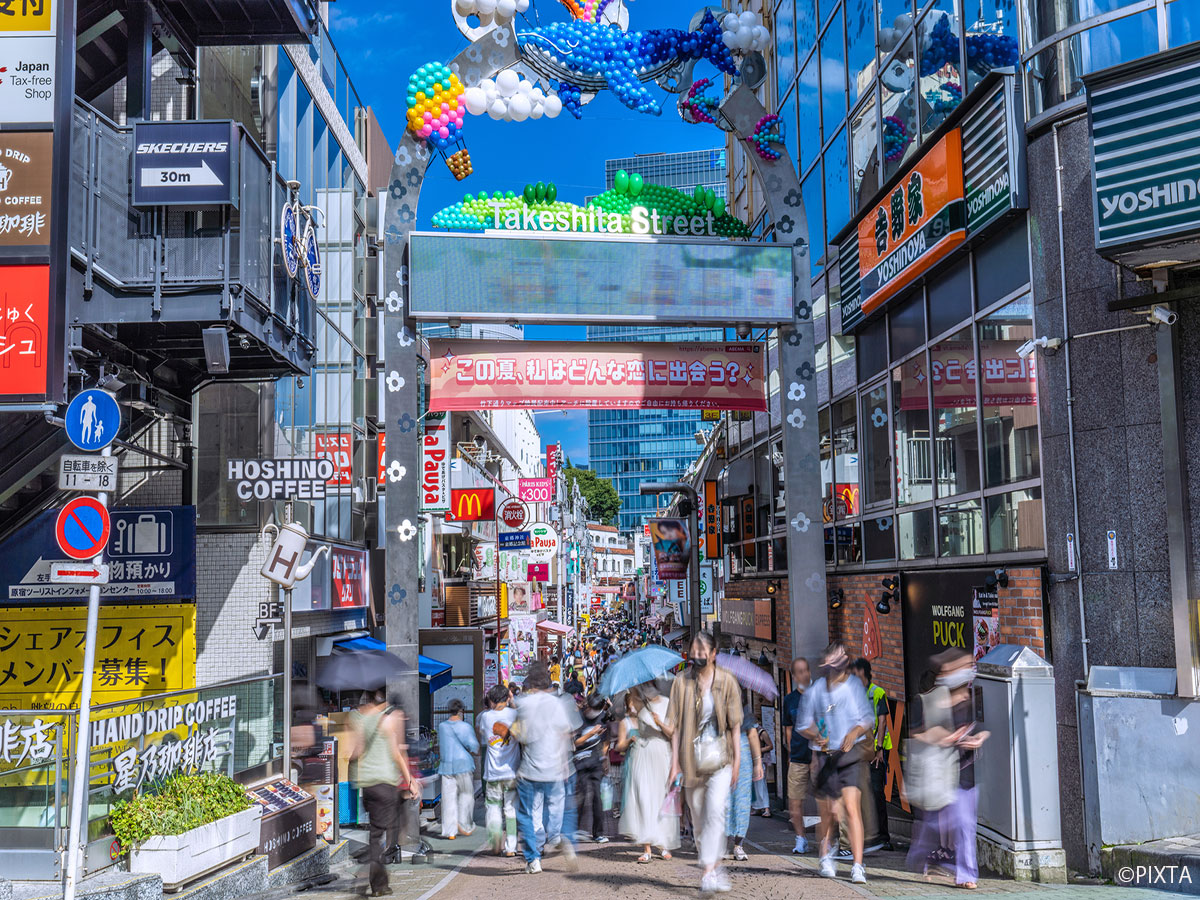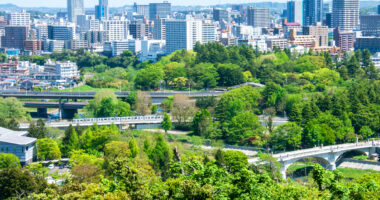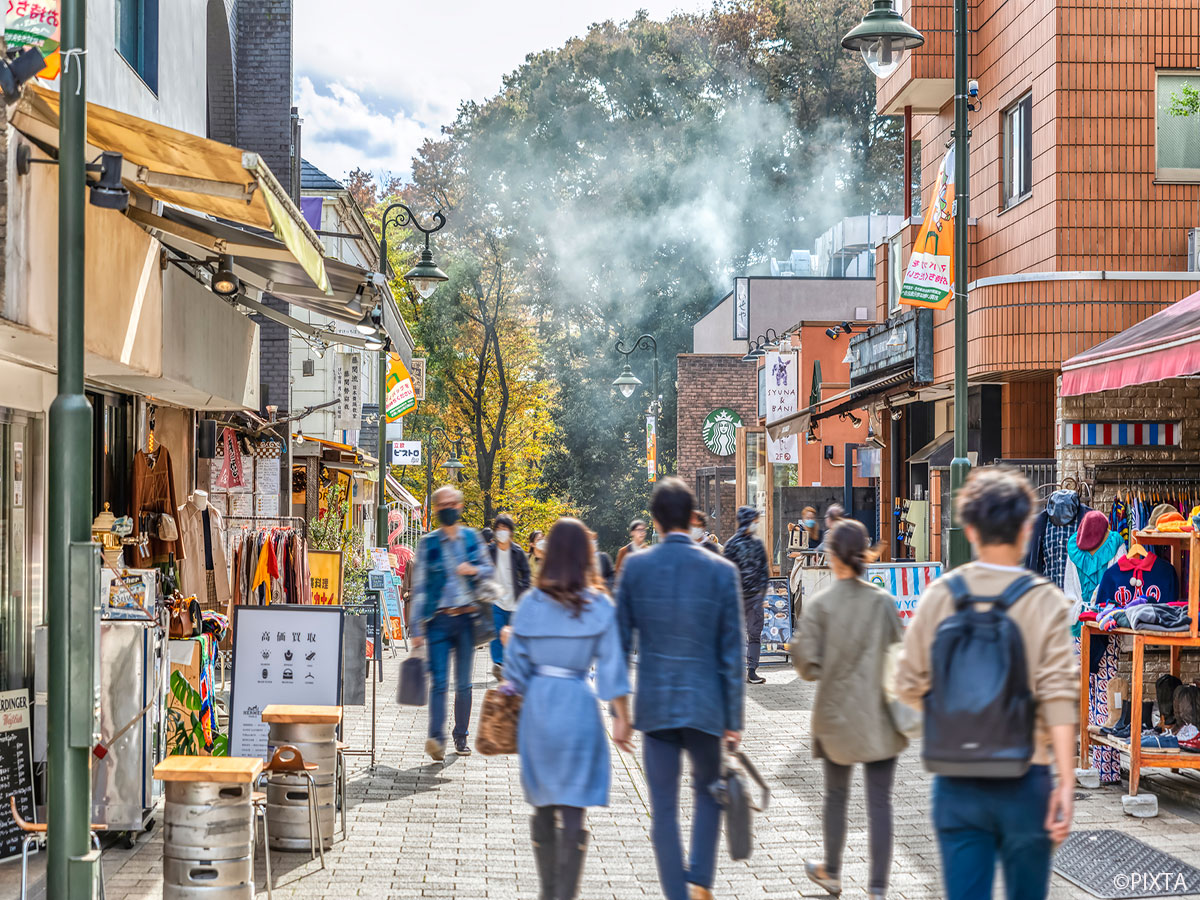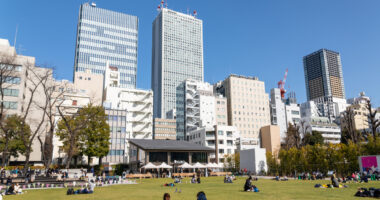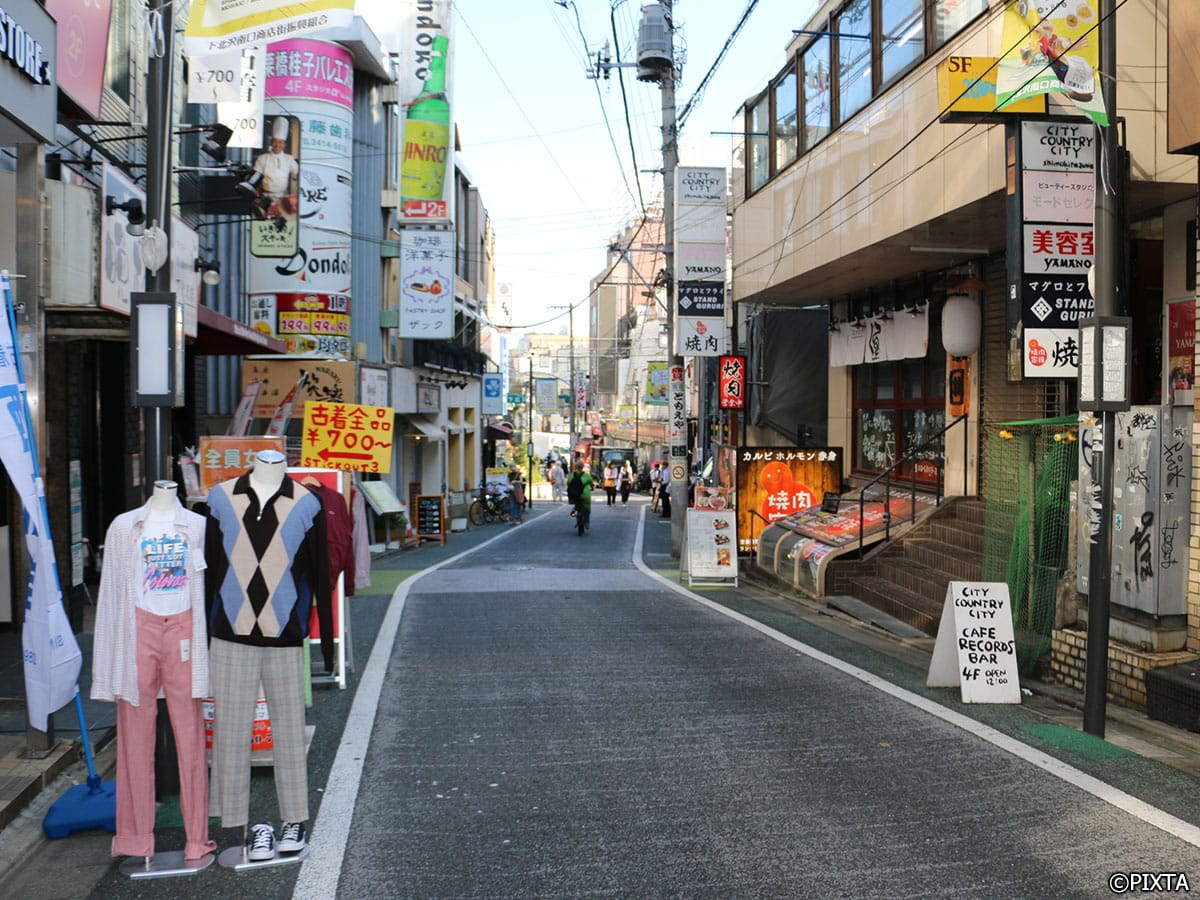Golden Week in Japan is like a bustling river, with crowds flocking to the major cities, creating a rush of energy and excitement. But for those seeking a more peaceful and authentic experience, rural Japan offers a quiet, flowing stream—serene, beautiful, and full of hidden treasures. Imagine stepping off the conventional path, where wisteria blossoms dance in the spring breeze and time slows down in charming towns.
If you’re looking to escape the crowds and uncover Japan’s best-kept secrets this Golden Week, join us as we explore the tranquil retreats and cultural wonders beyond the bright lights of the cities.
Embracing the beauty of slow travel in Japan
Golden Week is one of the busiest travel periods in Japan. With locals and tourists flocking to famous spots like Tokyo, Kyoto, and Osaka, city streets become packed, and popular attractions get overwhelming. However, there’s another way to enjoy this holiday—by escaping into the countryside.
Rural Japan offers a world of beauty, culture, and peace. It’s where you can truly slow down, experience old traditions, and connect with nature. From relaxing in hidden hot springs to exploring charming small towns, there are countless hidden travel spots in Japan waiting to be discovered. If you’re looking for unique Golden Week getaway ideas, heading off the mainstream path might just be your best decision yet.
Golden Week, which spans from April 29 to May 5, is a time when several national holidays come together, creating the perfect opportunity for a well-deserved break. Here’s why you should consider traveling to the Japanese countryside during this time:
Avoid the crowds
While big cities and well-known attractions are packed, rural areas stay peaceful. Popular spots like Shibuya in Tokyo, Fushimi Inari Shrine in Kyoto, and Osaka Castle can become overwhelmingly crowded, but countryside locations allow for a more relaxed experience.
Authentic cultural experiences
Villages and small towns preserve old traditions and give you a chance to see Japan’s real heritage. Thus, instead of navigating through tourist traps, you can interact with locals, learn about historical practices, and witness traditional crafts being made.
Breathtaking scenery
Rural Japan is full of natural wonders that remain untouched. It offers scenic landscapes that you can’t find in major cities. Picture villages nestled in green hills, rivers winding through valleys, and vibrant wildflowers. Rolling mountains, hidden waterfalls, and stunning rice fields create postcard-perfect views.
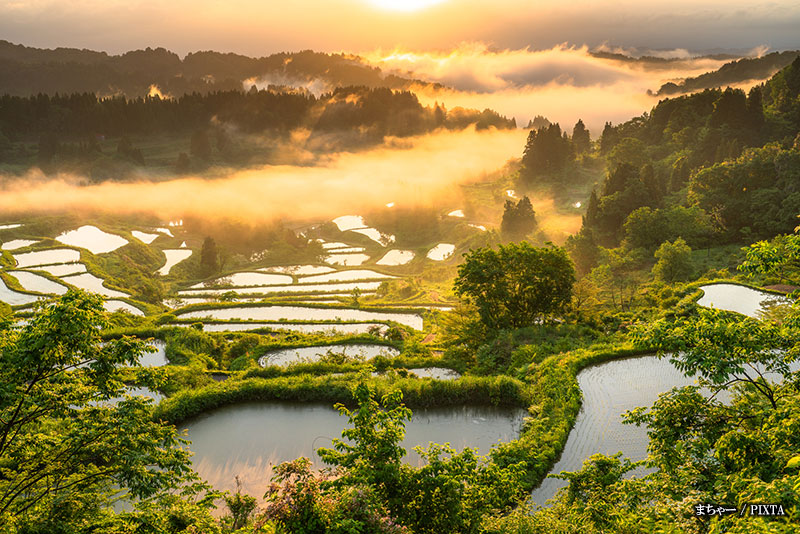
Photo for illustrative purposes
Relaxation and wellness
Rural Japan is home to some of the best onsen (hot springs) that are perfect for unwinding. Unlike large onsen resorts, countryside baths often offer a more secluded and immersive experience, surrounded by lush forests or overlooking serene lakes.
Seasonal beauty
Spring in rural Japan is stunning. While Golden Week often coincides with the late cherry blossom season in northern regions, fresh greenery and vibrant wisteria, azaleas, and other flowers bloom elsewhere, making the countryside even more picturesque.
Local festivals
Many small towns and villages host their own unique festivals during Golden Week, featuring traditional performances, street food, and lively parades. These local events provide an opportunity to experience Japanese culture in an authentic and intimate setting.
If you love a journey that feels personal and immersive, then venturing into the Japanese countryside is the way to go.
Transportation tips: How to get around
Traveling through rural Japan may seem challenging, but it’s easier than you think. Here are some of the best ways to get around:
- Japan Rail Pass:
If you plan to explore multiple areas, consider getting the Japan Rail Pass. This pass gives you unlimited rides on many trains, including the Shinkansen (bullet train). It’s a cost-effective choice for long-distance travel. - Regional train passes:
Many regions offer their own passes, such as the JR East Pass (great for Tohoku) or the All Kyushu Rail Pass (convenient for traveling within Kyushu). These passes can save money and make exploring specific regions more convenient. - Rental cars:
Some remote areas have limited public transport. Renting a car gives you the freedom to explore at your own pace. Driving in Japan is smooth, and GPS in rental cars often has English support. Keep in mind that an International Driving Permit (IDP) is required for foreign drivers with the exception of drivers from Switzerland, Germany, France, Belgium, Monaco and Taiwan. - Local buses:
Small towns and villages often have convenient local buses. Be sure to check schedules in advance since service may be limited. Some areas also have sightseeing buses that connect major attractions. - Bicycles:
Cycling is a great way to enjoy countryside roads, rice fields, and charming villages. Many rural towns offer bike rentals, making it easy to explore scenic landscapes at a leisurely pace. - Taxis and ride-sharing:
While taxis are available, they can be expensive in rural areas. Ride-sharing apps are not as widely used in Japan, so it’s best to plan alternative transportation in advance.
Transportation options at a glance
| Mode of Transport | Best For | Notes | Options |
|---|---|---|---|
| Japan Rail Pass | Long-distance travel | Ideal for multi-city travel; valid on bullet trains | JAPAN RAIL PASS |
| Regional Train Passes | Exploring specific regions | Cost-effective for shorter trips in a single area | JR EAST PASS, All Kyushu Rail Pass |
| Rental Cars | Remote locations, flexibility | Requires an International Driving Permit (IDP) | Toyota Rent a Car, ORIX Rent a Car, Times CAR RENTAL |
| Local Buses | Small towns, budget travel | Check schedules in advance due to limited service | Japan Travel |
| Bicycles | Scenic exploration, short distances | Available in many countryside areas | Eg. Trekkling in Okutama |
| Taxis | Short distances, last-mile travel | Can be expensive; best for areas with no other transport options | Japan Travel |
When planning your journey, it’s advisable to check the latest schedules and availability for each service, as they can vary by region and season.
Regional highlights: best hidden travel spots in Japan
Tohoku: a land of onsen, cherry blossoms, and rich traditions
Tohoku, the northernmost region of Japan’s main island, is a paradise for travelers seeking a mix of scenic beauty, historic sites, and cultural authenticity. The region is known for its traditional hot springs, vibrant local festivals, some of which you can enjoy at this time of year, and its spectacular cherry blossoms, often still in bloom in the northernmost parts in late April just before and around the beginning of Golden Week.
Hidden gems
- Nyūtō Onsen:
Nestled in the mountains of Akita, this secluded hot spring village is known for its rustic open-air baths. Each ryokan has its own natural spring, with some inns operating for centuries. The area is particularly magical in the spring, with cherry blossoms and lingering snow creating an ethereal landscape. - Hirosaki Castle:
Aomori’s most famous castle, Hirosaki is known for its breathtaking cherry blossom festival. With thousands of sakura trees reflecting in the castle’s moat and pink petals covering the ground like a carpet, it’s a sight straight out of a dream. - Ginzan Onsen:
This picturesque hot spring town in Yamagata Prefecture is known for its beautifully preserved Taisho-era wooden buildings that line the river. The town looks like a scene from a historical drama, especially in the evenings when gas lanterns illuminate the streets. During Golden Week, the lush green surroundings make it a perfect getaway for relaxation. - Lake Towada and Oirase Gorge:
Located in Aomori Prefecture, this stunning lake and scenic gorge offer some of the most beautiful springtime nature in Japan. Golden Week is the perfect time to explore the lush trails along Oirase Stream, where moss-covered rocks and waterfalls create a tranquil escape from the busy urban centers.

Photo for illustrative purposes
Chugoku: historic towns, silver mines, and sacred shrines
Chugoku, located in western Honshu, is rich in cultural heritage and hidden natural wonders. The region is home to sacred sites, charming historic towns, and lesser-known yet breathtaking landscapes perfect for exploration.
Hidden gems
- Tsuwano:
Often referred to as a “little Kyoto,” this picturesque town retains a nostalgic charm with its old samurai residences, koi (carp)-filled canals, and vibrant Taikodani Inari Shrine with its rows of red torii gates. The town also hosts the Otome Toge Christian Martyrs Festival during Golden Week, which makes it a great time to visit. - Iwami Ginzan:
Once home to a historic silver mine, Ginzan Onsen played a crucial role in Japan’s economy during the Edo period. Today, you can explore preserved mine shafts, stroll through charming merchant districts, and learn about traditional silver refining techniques at local museums. - Sandankyo Gorge:
Located near Hiroshima, this hidden natural wonder features stunning waterfalls, emerald-green waters, and dramatic cliffs. It’s a great place for a peaceful hike, and during Golden Week, the fresh greenery is at its most vibrant. - Okayama’s Kurashiki Bikan Historical Quarter:
This beautifully preserved canal district is lined with Edo-period warehouses, charming wooden bridges, and boutique shops. During Golden Week, the area hosts traditional performances and cultural events, offering a deeper insight into Japan’s historical past.
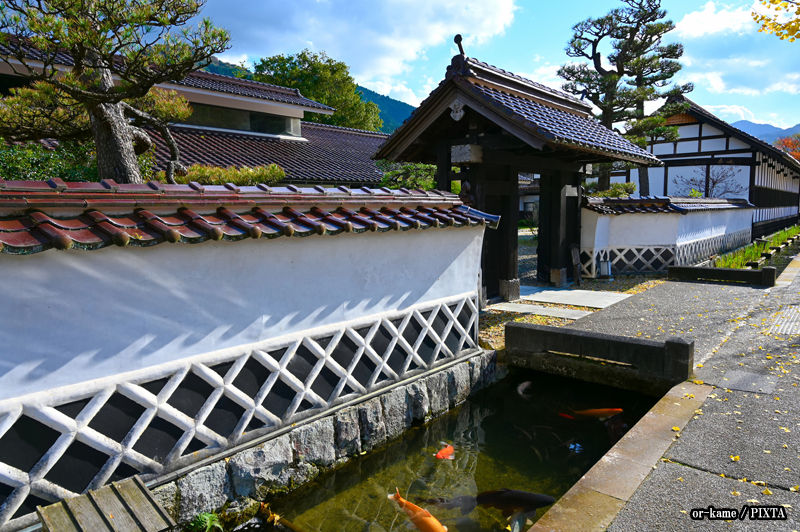
Photo for illustrative purposes
Kyushu: mystical landscapes, volcanic wonders, and healing waters
Kyushu is a region known for its diverse landscapes, from active volcanoes to lush valleys. It’s a place where history, mythology, and natural beauty come together, making it an incredible destination for those who want to experience Japan’s hidden treasures.
Hidden gems
- Kurokawa Onsen:
Kurokawa Onsen is a picturesque hot springs town known for its traditional inns and natural hot springs. Unlike big touristy onsens, Kurokawa keeps its quiet, nostalgic charm intact. Guests can enjoy open-air baths with stunning views of the surrounding forests, making it an ideal retreat for relaxation. - Takachiho:
This one is famous for its dramatic gorge and legendary ties to Japanese mythology. Take a boat ride through the canyon and witness the breathtaking Manai Falls. The area is also home to Takachiho Shrine, where visitors can watch a traditional Yokagura dance performance, depicting Japanese creation myths. - Yufuin:
This charming town, known for its boutique cafes, art museums, and scenic views of Mount Yufu, is a perfect blend of nature and culture. - Mt. Aso:
One of the largest active volcanoes in the world, Mount Aso offers breathtaking crater views and scenic hiking trails.
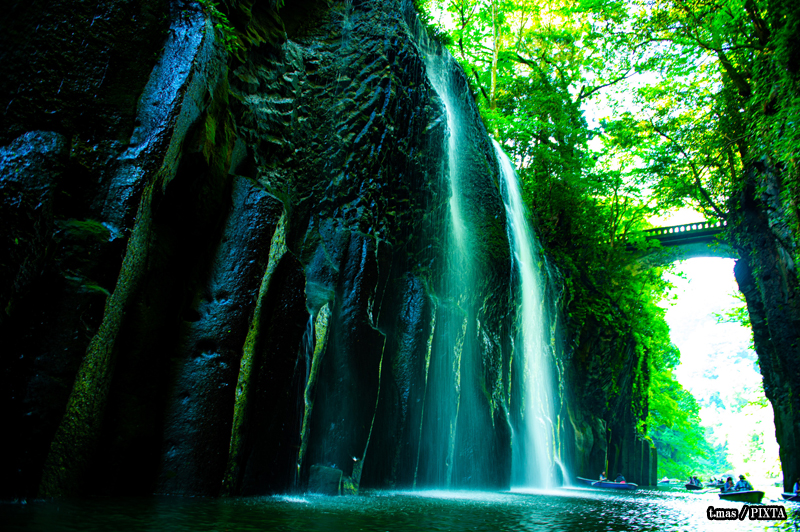
Photo for illustrative purposes
Shikoku: timeless villages, sacred pilgrimages, and wild rivers
Shikoku is the smallest of Japan’s four main islands, but it is filled with history, natural beauty, and deep spiritual significance.
Hidden gems
- Uchiko:
A beautifully preserved town with Edo-period merchant houses and an old kabuki theater. It’s a great place to see how life in Japan used to be. Visitors can explore the Uchikoza Theater, which still hosts performances, and experience candle-making, a craft with deep roots in the region. - Ritsurin Garden:
This garden is one of Japan’s most beautiful strolling gardens, featuring koi ponds, historic teahouses, and meticulously designed landscapes. It offers a glimpse into Japan’s traditional garden artistry, where every view feels like a living painting. Visitors can enjoy a peaceful boat ride or sip matcha in an elegant teahouse while admiring seasonal blooms. - Oboke Gorge:
Oboke is a stunning river gorge known for its emerald waters and rugged cliffs. You can take a sightseeing boat ride or go white-water rafting for an adventure. - Iya Valley:
This remote mountain valley near Oboke Gorge is famous for its breathtaking natural beauty. It’s a place where time slows down, offering a glimpse into Japan’s remote past. Travelers can cross the swaying Kazurabashi Bridge made of vines (reinforced with hidden steel cables), explore hidden thatched-roof villages, and take in panoramic views of dramatic cliffs and winding rivers.
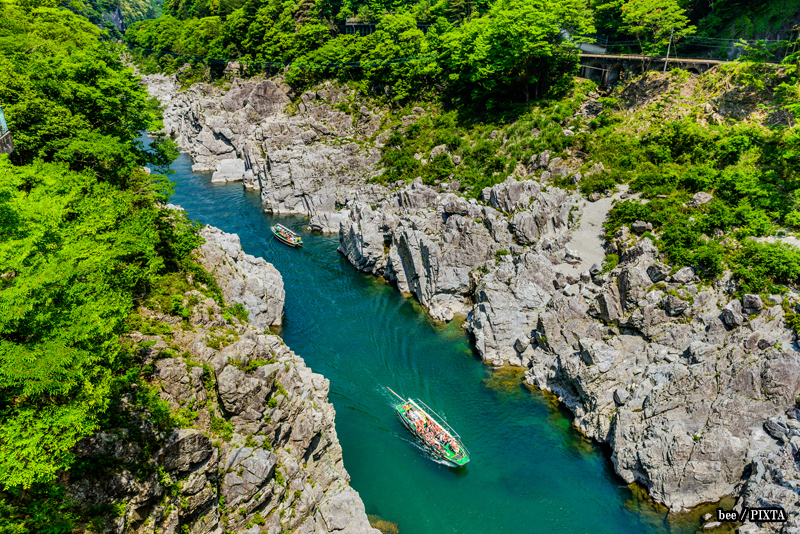
Photo for illustrative purposes
Cultural activities and nature trails
Exploring rural Japan isn’t just about sightseeing—it’s about experiencing. Here are some unique activities you can enjoy:
Stay in a ryokan (traditional Japanese inn)
Sleep on tatami mats, wear a yukata (a light summer kimono, usually made of cotton), and enjoy a kaiseki (traditional multi-course meal) meal with seasonal ingredients. Some ryokan also have private open-air hot springs for a truly immersive experience.
Join a local festival
Small-town festivals during Golden Week are lively and fun. They feature things like taiko drum performances, samurai reenactments, and traditional dances. A great example is the Hamamatsu Festival in Shizuoka (May 3-5), famous for its giant fighting kites flown over Nakatajima Dunes by day and its ornate, lantern-lit parade floats by night.
Hike hidden trails
Many countryside areas have scenic walking paths leading to shrines, waterfalls, or panoramic viewpoints. Try the Kumano Kodō pilgrimage route in Wakayama for a spiritual hiking experience.
Try local crafts
Some towns offer workshops for making pottery, washi paper, or traditional sweets. In Takayama, you can try Hida wood carving, while in Echizen, you can learn the art of Japanese papermaking.
Food and lodging in the countryside
Rural Japan is a paradise for food lovers. Every region has its specialty dishes, often made with fresh local ingredients. Here are some must-try regional specialties:
- Tohoku: Try kiritanpo (grilled rice skewers) and fresh seafood from the Sanriku Coast.
- Chugoku: Sample Hiroshima-style okonomiyaki and Matsuba crab from Shimane.
- Kyushu: Don’t miss Hakata ramen, wagyu beef from Miyazaki, and local shōchū (Japanese liquor).
- Shikoku: Taste Sanuki udon from Kagawa and citrus fruits from Ehime.
When it comes to accommodation, it ranges from charming guesthouses to luxurious ryokan. Many provide meals made from local ingredients, giving you a true taste of Japan’s culinary traditions.
Conclusion: the joy of slow travel
Rural Japan is more than just a getaway—it’s a chance to experience Japan in its purest form. Whether you’re soaking in an onsen, walking through historic streets, or enjoying a home-cooked meal at a countryside inn, these hidden travel spots in Japan offer unforgettable memories.
So, as you plan your Golden Week getaway ideas, consider skipping the crowded cities. Instead, embrace the peace of Japan’s countryside travel. You’ll find warm hospitality, stunning landscapes, and a slower pace that lets you truly savor each moment.
Ready to explore? Pack your bags, leave the rush behind, and step into the heart of Japan’s countryside. With Umami bites, embark on a journey where breathtaking sights meet unforgettable flavors. Explore hidden gems, savor authentic local dishes, and experience Japan beyond the guidebooks. Your adventure awaits!
